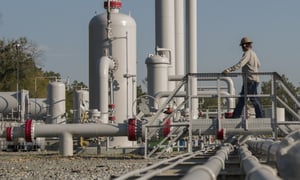Beneath familiar hydrocarbon plays lies a subtle component whose extraction has flown under most investors’ radars, yet whose trajectory may reshape supply dynamics. The current interplay between field economics and evolving processing technologies is creating an environment in which modest concentrations of this rare gas can justify significant capital deployment, setting the stage for a transformative chapter in the resource sector.
Helium’s journey begins when natural gas reservoirs contain just enough of the element, often measured in fractions of a percent, to warrant bespoke separation facilities. Historically, only those sites that combined sufficient volume with concentrations north of roughly four hundred parts per million attracted investment. But advances in purification methodologies have gradually lowered the threshold for economic viability. What once required a deeply enriched stream can now be distilled to purity from more marginal compositions, leveraging sequential cryogenic distillation, adsorption techniques and catalytic conversion. The result is a crude gas blend that, after iterative cooling and pressure‐swing operations, yields a helium fraction exceeding ninety‐nine point nine percent, with premium grades reaching six nines of purity. Such technical refinements have quietly redefined the calculus for field development, opening up acreage once deemed unprofitable to specialist players.
Those changes have coincided with mounting downstream demand from industries that depend on ultra‐low temperature cooling, semiconductor manufacturing and high‐precision leak detection. Each of these end markets prizes the inert properties of helium and the exceptionally low boiling point that enables superconducting magnets and quantum research. As legacy reserves dwindle and conventional supplies face periodic disruptions, buyers have begun to look beyond traditional sources. This shift has unveiled opportunities for firms that can secure long‐term offtake contracts and anchor their balance sheets with tangible inventory. For newcomers, aligning processing capacity with offtake agreements has emerged as a critical differentiator.
Developers are structuring projects in two stages: initial field appraisal and gas conditioning, immediately followed by tie‐ins to specialised processing deserts. In many cases, a solitary plant now handles both crude separation and final purification, replacing the multi‐site logistics of the past. This streamlining has reduced handling costs and shrinkage, while enhancing margins. At the same time, midstream infrastructure, long viewed as a bottleneck, has begun to accommodate modular helium trains that scale quickly, deploying standardised cryogenic units and adsorption skids that plug into existing gas treatment complexes. The net effect is a leaner capital footprint and a shorter path to commercial production.
Against this technical backdrop, pricing dynamics have grown more responsive. Spot quotes for cylinderised volumes can fluctuate sharply on shifting supply expectations, amplifying the rewards for agile producers. Meanwhile, long‐term indexed agreements have become more common, binding customers to periodic escalators tied to industrial gas indices. Savvy investors are watching for operators that blend spot exposure with backlog, cushioning revenue streams against cyclical swings while capturing upside when markets tighten. This blended approach can elevate internal rates of return and enhance resilience in uncertain cycles.
By securing acreage with modest helium grades and pairing it with next‐generation separation facilities, General Helium aims to convert niche reservoirs into sustained cash generators. Its strategy hinges on integrating field development with processing modules that can be relocated or expanded, minimising stranded capital. Furthermore, by inking multi‐year delivery contracts with critical technology customers, General Helium is constructing a revenue base that can withstand short‐term price gyrations. As the industry pivots from legacy supply structures to flexible modular frameworks, the company’s playbook offers a template for unlocking value where others see marginal returns.
Ultimately, the case for tracking helium through an investor lens rests on recognising how incremental technical advances ripple through the entire supply chain. From reservoir chemistry to final purification, each step has become more cost‐efficient, creating a broader set of commercially viable targets. And as global demand continues to diversify across high‐value applications, the premium for reliability and transparency in supply will likely endure. In this context, operators that marry specialised processing with disciplined contract structures stand to redefine what a resource play can deliver.
General Helium Inc is an emerging helium production company led by experienced oil and gas industry veterans. Focused on developing existing resources rather than exploration, GH prioritizes generating free cash flow.









































